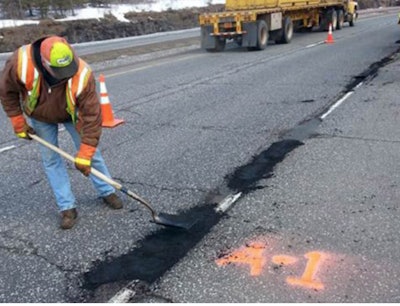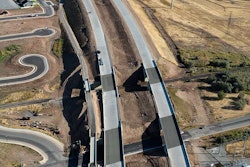
Choosing the best or most cost-effective pothole repair method has long been a complicated puzzle for road crews.
Now you can use a “decision tree” tool to match the best patch to fix your potholes.
The University of Minnesota Duluth’s (UMD) Swenson College of Science and Engineering devised the tree while studying potholes and how to repair them.
The research examined all the different kinds of potholes, and all the different repair methods available as well.
Instead of recommending a one-size-fits-all approach, the researchers came up with their decision tree tool that matches the best patching method to the pothole in question. The idea has been so well received that it drew media attention.
If your pothole is a certain width, depth, in the wheel path or between lanes, or on a rural road with little traffic, the decision tree will show which patching method will work best, according to the National Road Research Alliance newsletter from the Minnesota Department of Transportation.
“Selecting the appropriate patching method and materials varies depending on several factors, including the size of the pothole and its location on the roadway,” explains Manik Barman, an assistant professor with the University of Minnesota Duluth (UMD) Department of Civil Engineering.
“Patching methods and materials also face seasonal challenges in Minnesota when asphalt plants shut down for the winter, turning cold-weather repairs into short-term fixes,” he says.
That’s why the Minnesota Department of Transportation (MnDOT) funded research to help road crews choose patching methods that match specific repair conditions.
 Click to see full size.
Click to see full size.UMD researchers explored patching tools, materials, and methods to identify which ones were most appropriate for specific pothole conditions, road locations and the time of year.
They also evaluated the effectiveness of different methods based on durability, road safety, ride quality and driver satisfaction, the university says.
“We wanted to develop a decision tree for choosing the right pothole repair method that could be laminated for use in the field,” says Susan Lodahl, assistant state maintenance engineer with the MnDOT Office of Maintenance.
Researchers began by reviewing existing literature to identify the four repair methods best suited to Minnesota. Those are cold mix, hot recycled asphalt, mastic material, and mill-and-fill with hot-mix asphalt.
Next, they identified five sites near Duluth, where they oversaw 20 pothole repairs. Investigators monitored these repairs for two years to assess the methods and their best applications.
Their findings include these points:
- Cold-mix asphalt patch should only be used for temporary fixes in small to medium potholes. The material is not designed to be structurally sound for depths beyond two inches.
- Virgin hot-mix asphalt during the regular season is the most acceptable option for filling milled areas. This option can be used in any situation—mill-and-fill or established potholes.
- Mastic, although expensive, is the best option for repairing small potholes as well as longitudinal joints.
Using the findings from this study, researchers developed decision trees to help road crews choose the most suitable method for each repair. The trees come in in both flowchart and flash card forms.
The researchers also compiled best practice guidelines for patching method selection, placement, compaction practices, and moisture control to provide further guidance.
“The decision trees and best practices we developed can be easily combined into a patching guide that, with laminated flash cards, can be distributed to MnDOT road crews throughout the state and will also be invaluable to our local public agencies in Minnesota and beyond,” Barman says.
A poster for the truck stations was also developed.













